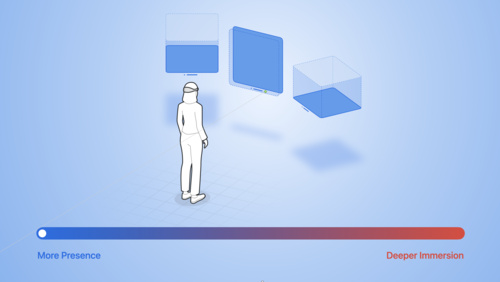Empowering Business: Spatial Computing Applications


Empowering Business: Unlocking the Potential of Spatial Computing in Business Applications
Spatial computing, once a concept relegated to the realms of science fiction, is now making waves in the business world. This transformative technology has the potential to revolutionize the way businesses operate, bringing forth a new era of efficiency, collaboration, and innovation.
The Foundation of Spatial Computing
At its core, spatial computing involves the use of digital technology to interact with the physical world. This includes technologies such as augmented reality (AR), virtual reality (VR), and mixed reality (MR). These immersive technologies overlay digital information onto the real world, creating an environment where the physical and digital coexist seamlessly.
Enhancing Efficiency in Operations
One of the primary benefits of spatial computing in business applications is its ability to enhance operational efficiency. For instance, in manufacturing settings, AR can provide real-time information to workers, guiding them through complex assembly processes. This not only reduces errors but also speeds up production, ultimately leading to increased efficiency and cost savings.
Revolutionizing Collaboration and Communication
Spatial computing breaks down geographical barriers and facilitates collaboration on a global scale. With VR or AR meeting spaces, teams can come together virtually, regardless of their physical locations. This fosters a sense of presence and engagement, making collaborative efforts more effective and dynamic.
Immersive Training and Skill Development
Training employees can be a time-consuming and costly process. Spatial computing introduces a new dimension to training programs by offering immersive and interactive experiences. For instance, employees can undergo virtual simulations that mimic real-world scenarios, providing hands-on training without the associated risks.
Customer Engagement and Experiences
Businesses are increasingly using spatial computing to enhance customer engagement and experiences. AR applications allow customers to visualize products in their real-world environment before making a purchase decision. This not only improves customer satisfaction but also reduces return rates as customers have a clearer understanding of the products they are buying.
Spatial Computing in Healthcare
The healthcare industry is leveraging spatial computing for various applications, from surgical simulations to patient care. Surgeons can use AR to overlay medical information during procedures, improving precision and reducing the risk of errors. Additionally, VR is being used for therapeutic purposes, creating immersive environments to aid in patient rehabilitation and mental health treatments.
Data Visualization and Decision-Making
Spatial computing enables businesses to visualize complex data sets in three dimensions, offering a new perspective on information. This has profound implications for data-driven decision-making. Executives can explore data landscapes in VR, gaining deeper insights and making more informed strategic choices.
Challenges and Considerations
While the potential of spatial computing is vast, businesses must navigate challenges such as data security, privacy concerns, and the initial costs of adopting new technologies. Addressing these challenges is crucial to unlocking the full benefits of spatial computing in business applications.
The Future Landscape of Spatial Computing
As technology continues to evolve, the future of spatial computing in business applications looks promising. Advancements in hardware, software, and connectivity are paving the way for even more sophisticated and widespread adoption. Businesses that embrace spatial computing today are positioning themselves for a competitive advantage in the future.
Visit activolaboral.com to explore how Spatial Computing in business applications can transform your organization, fostering innovation and driving business success.




